What is the primary purpose of a Punnett Square?
To determine the sequence of DNA
To predict the probability of certain traits in offspring
To map the human genome
To clone organisms

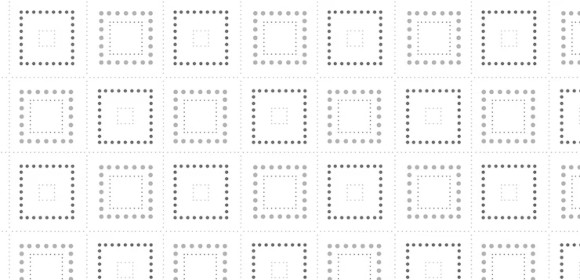
People inherit genes, mutations, and adaptations that their parents will pass on to them. There are many ways people can predict the outcome of the person’s genetic makeup, which will dictate various traits, characteristics, and physical properties the person may have.
A Punnett square is a table-like tool people can use to predict the various genotypes that will be active in the breeding or cross-breeding of two organisms. A person can use this tool in many different contexts, tones, and themes, which will range from plants to various animals.
Punnett square has two different modes in the x and y-axis, which will represent the dominant and recessive genes of a specific trait or characteristic. The Punnett square will help calculate the chances of the offspring obtaining the specific trait or characteristic.
Begin by obtaining a Punett square outline or outline format, which will help provide a base you can use to easily make your Punnett square. This will also help ensure that you have all the elements the Punnett square will need.
List out the dominant and recessive genes on the x-axis and y-axis on the punnet square respectively. Write down the dominant genes letters in uppercase and the recessive genes letters in lowercase on the two squares of the x and y-axis.
In each quadrant of the Punnett square, pair up the uppercase and lowercase letters. Each pairing of the letters in the Punnett square corresponds to a certain percentage chance of the person obtaining the specific characteristic and genes.
You can opt to repeat steps 1 to 3 until you have listed out all the genes and characteristics you would like to list down. Be sure to appropriately list out the amount of dominant and recessive genes in the equation per trait or characteristic.
Genotype is the scoring of the specific combination of dominant and recessive genes that are represented in the four quadrants of the Punnett square. Often in the form of two of the same letter with one that is uppercase and another one that is lowercase. This will also represent the percentage chance a specific trait or characteristic will be passed to their offspring.
Phenotype are the labels of the Punnett square, which represent the traits or characteristics that will either be the recessive or dominant gene in the Punnett square. The phenotype also factors various environmental and racial factors into the mix.
There are three basic types of phenotypes that people based on the types of alleles or genotypes in the combination. These basic types will manifest as AA, Aa, and aa where A is the dominant gene’s genotype and a is the recessive genes genotype.
The Punnett square is a tool people use to determine the offspring’s chances of obtaining specific genes and characteristics from their parents. Proper usage of this tool will help the person identify which traits will more likely manifest in the person.

People inherit genes, mutations, and adaptations that their parents will pass on to them. There are many ways people can predict the outcome of the person’s genetic makeup, which will dictate various traits, characteristics, and physical properties the person may have.
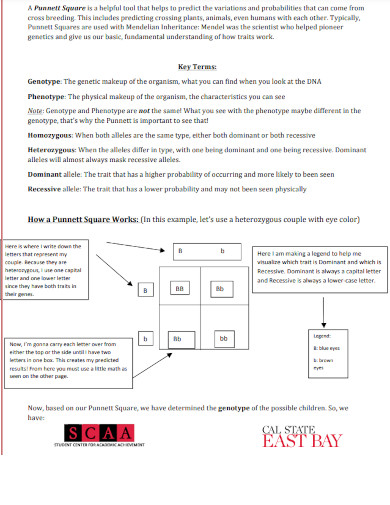
csueastbay.edu
Details
File Format
Size: 71 KB
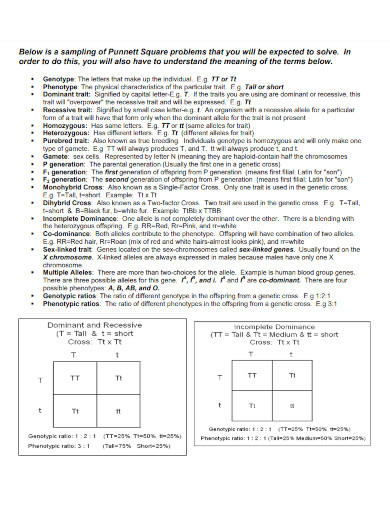
greeleyschools.org
Details
File Format
Size: 87 KB
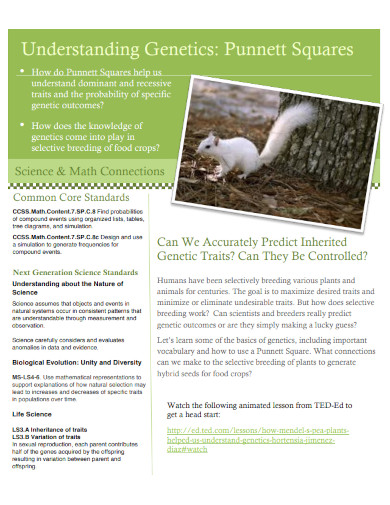
wku.edu
Details
File Format
Size: 82 KB
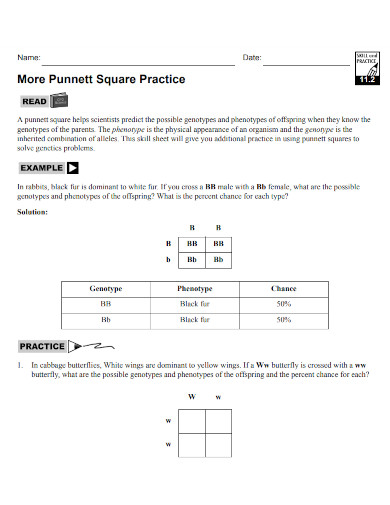
pgsd.org
Details
File Format
Size: 41 KB
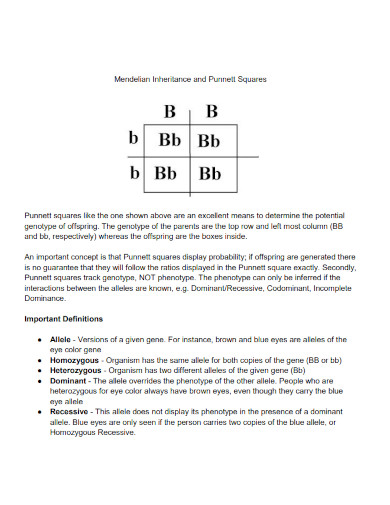
cuyamaca.edu
Details
File Format
Size: 57 KB
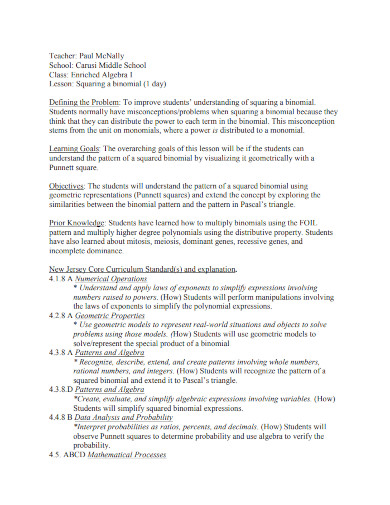
sas.upenn.edu
Details
File Format
Size: 74 KB
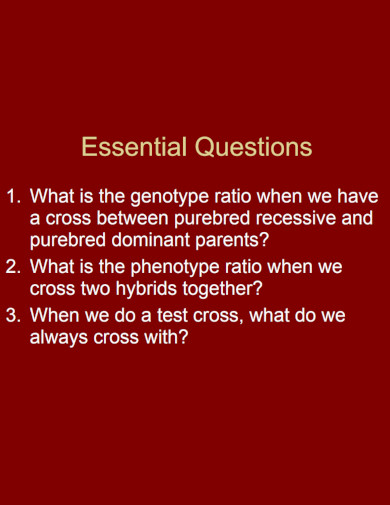
whs.rocklinusd.org
Details
File Format
Size: 46 KB
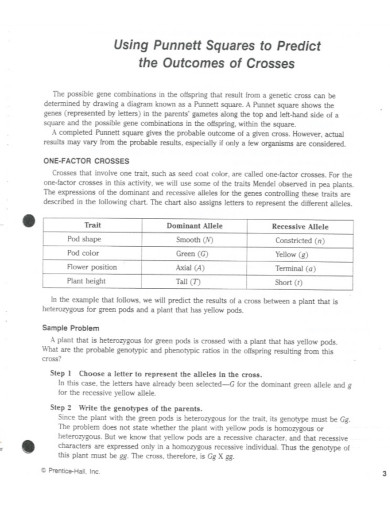
isd2135.k12.mn.us
Details
File Format
Size: 46 KB
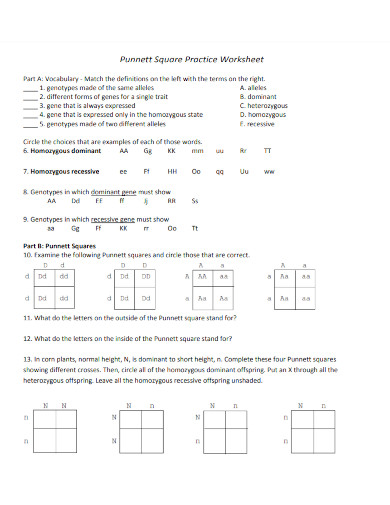
leonschools.net
Details
File Format
Size: 47 KB
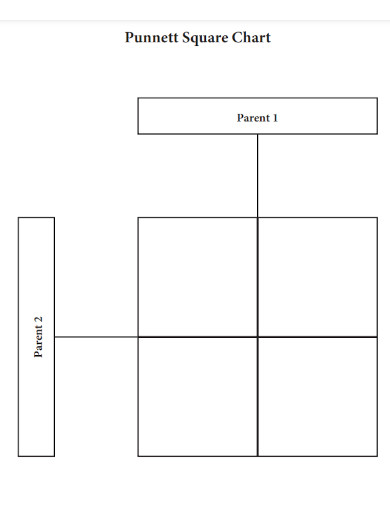
cdn.agclassroom.org
Details
File Format
Size: 13 KB
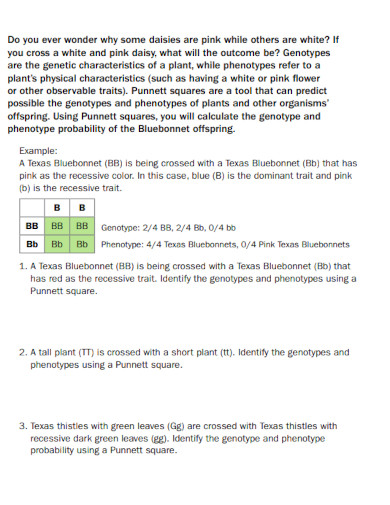
ftp.txdot.gov
Details
File Format
Size: 72 KB
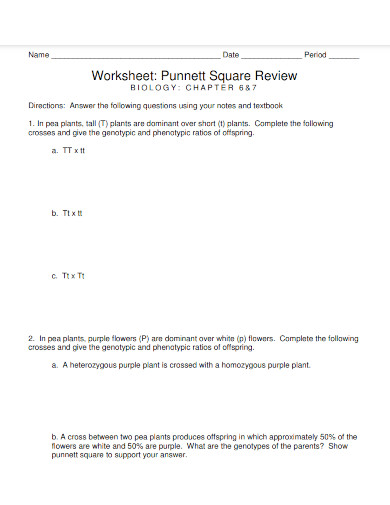
frontiercsd.org
Details
File Format
Size: 34 KB
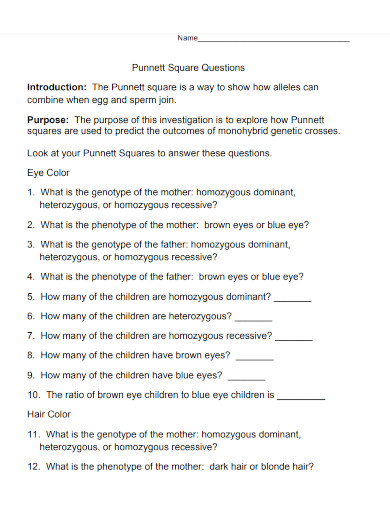
perkins.org
Details
File Format
Size: 68 KB

sugarloaf.nbed.nb.ca
Details
File Format
Size: 56 KB
A Punnett square is a table-like tool people can use to predict the various genotypes that will be active in the breeding or cross-breeding of two organisms. A person can use this tool in many different contexts, tones, and themes, which will range from plants to various animals.
Punnett square has two different modes in the x and y-axis, which will represent the dominant and recessive genes of a specific trait or characteristic. The Punnett square will help calculate the chances of the offspring obtaining the specific trait or characteristic.
Begin by obtaining a Punett square outline or outline format, which will help provide a base you can use to easily make your Punnett square. This will also help ensure that you have all the elements the Punnett square will need.
List out the dominant and recessive genes on the x-axis and y-axis on the punnet square respectively. Write down the dominant genes letters in uppercase and the recessive genes letters in lowercase on the two squares of the x and y-axis.
In each quadrant of the Punnett square, pair up the uppercase and lowercase letters. Each pairing of the letters in the Punnett square corresponds to a certain percentage chance of the person obtaining the specific characteristic and genes.
You can opt to repeat steps 1 to 3 until you have listed out all the genes and characteristics you would like to list down. Be sure to appropriately list out the amount of dominant and recessive genes in the equation per trait or characteristic.
Genotype is the scoring of the specific combination of dominant and recessive genes that are represented in the four quadrants of the Punnett square. Often in the form of two of the same letter with one that is uppercase and another one that is lowercase. This will also represent the percentage chance a specific trait or characteristic will be passed to their offspring.
Phenotype are the labels of the Punnett square, which represent the traits or characteristics that will either be the recessive or dominant gene in the Punnett square. The phenotype also factors various environmental and racial factors into the mix.
There are three basic types of phenotypes that people based on the types of alleles or genotypes in the combination. These basic types will manifest as AA, Aa, and aa where A is the dominant gene’s genotype and a is the recessive genes genotype.
The Punnett square is a tool people use to determine the offspring’s chances of obtaining specific genes and characteristics from their parents. Proper usage of this tool will help the person identify which traits will more likely manifest in the person.
Text prompt
Add Tone
10 Examples of Public speaking
20 Examples of Gas lighting
What is the primary purpose of a Punnett Square?
To determine the sequence of DNA
To predict the probability of certain traits in offspring
To map the human genome
To clone organisms
In a Punnett Square, if a homozygous dominant genotype (AA) is crossed with a homozygous recessive genotype (aa), what will be the genotype of the offspring?
AA
Aa
aa
Both AA and aa
What is the probability of obtaining a homozygous recessive genotype (aa) when two heterozygous individuals (Aa) are crossed?
0%
25%
50%
75%
If a heterozygous individual (Bb) is crossed with a homozygous recessive individual (bb), what proportion of the offspring will have the homozygous recessive genotype (bb)?
0%
25%
50%
100%
In a monohybrid cross between two heterozygous individuals (Gg), what is the expected phenotypic ratio of the offspring?
3:1
1:2:1
1:1
4:0
What represents a homozygous genotype?
XY
Aa
BB
Ab
What does each box in a Punnett Square represent?
A possible combination of gametes from each parent
The age of the offspring
The number of chromosomes
The genetic code sequence
If a Punnett Square has one parent with genotype RR and another with Rr, what are the possible genotypes of the offspring?
RR and Rr
RR, Rr, and rr
Rr and rr
Only RR
In a dihybrid cross between two heterozygous individuals (AaBb), what is the probability of obtaining an offspring with the genotype aabb?
1/16
1/8
1/4
1/2
Which of the following best describes the law of segregation as illustrated by a Punnett Square?
Each allele pair separates independently during gamete formation.
Alleles always come in pairs.
Only dominant alleles are passed to offspring.
Genetic traits are acquired from the environment.
Before you leave, take our quick quiz to enhance your learning!

